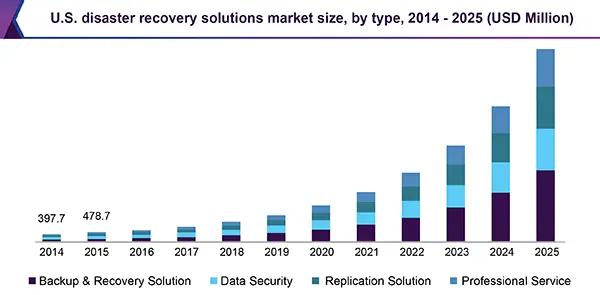How Effective is Your Disaster Recovery Strategy

Key Takeaways
- It is better to appoint someone as the leader in case of any catastrophe.
- Instead of focusing your plan on a specific type of tragedy, focus on recovery efforts.
- Your plan should identify the importance of each system. You also want to include a suggested timeframe.
Like most businesses, you likely have a disaster recovery strategy in place that’s ready to go when a catastrophe occurs.
With it, you can recover all of your business files and data, including some you never use, with ease and get back to daily operations. Your team is familiar with the procedures, so you are well-prepared for almost any situation.
However, this may actually create a false sense of security that shouldn’t be there—to help prevent this, what about evaluating the effectiveness of your disaster recovery strategy? If you haven’t performed a system test, are you positive your strategy is effective?
To ensure your business is ready, here are a few key tips to help you assess the effectiveness of your plan and ensure your organization is properly prepared.
Tips to Help You Assess Your Disaster Recovery Strategy
There are a variety of tips and advice to keep in mind that can help you assess your plan. Some of the most common things to consider include:
Does Your Recovery Plan Follow Logical Steps?
Take a look at your plan. Does it follow logical steps from start to finish? Stress levels will already be high during a catastrophe, and you don’t want to add to the tension and anxiety.
Even large corporations rarely need a disaster recovery strategy covering hundreds of pages. If you are overly large, start weeding useless information. For example, your team does not need to know the author of the document or their background. Only include details relevant to the steps. As you’re reviewing the strategy, ask your team for any input they may have.
Name a Recovery Leader
You’ll want to designate a team leader before a situation hits. The leader should be clearly identified in the strategy documents, and make sure everyone on the team knows who is leading the efforts. You can effectively reduce some of the stress before the process starts.
Assigning one person to lead the whole process will also help it run more smoothly and effectively. During your assessment, make sure the designated leader fully understands each step.
Is Your Plan Neutral or is It Specialized?
You can’t plan for every type of catastrophe. You also don’t want to create multiple redundant plans. Instead of immediately getting to work restoring business operations, your team is wasting time searching for the correct documents.
Your assessment should look at the neutrality of the disaster recovery strategy. Will it be effective in different scenarios? Instead of focusing your plan on a specific type of tragedy, focus on recovery efforts. The protocols for restoring communications, data, and resources are the same regardless of the cause.
Review All Contact Information
An effective list of all the necessary contact information for any relevant personnel. Remember, you cannot rely on employee files or other types of data as a basis for a tragedy.
These systems are usually shut down, and the data is temporarily lost. You also do not want employees scrolling through their personal contact lists in hopes they have the information stored in their phones. Not only is this inefficient, but it also wastes valuable time.
During the assessment, ensure current contact information is listed on the strategy documents. Listing the information on the first page will help ensure everyone on the team is in constant communication during the process.
Does the Plan Identify Critical Processes and Recovery Timeframes?
Some business systems are vital for daily operations, and others are nice to have up and running. For example, your business can continue operating without immediate access to your customer email list. However, your data communications system may be pivotal.
Your plan should identify the importance of each system. You also want to include a suggested timeframe. The timeframe can serve multiple purposes. Along with identifying the importance of each system, it can also give your team a general idea of how long it will take to restore each one.

Statistics:
Here in this graph, you can see the data of the US disaster recovery solutions market size in 2014 (in USD Million).
A timeframe also lets you and your employees know when they can expect things to be back up and running.
Is the Plan Easily Accessible?
Some business owners and managers prefer keeping all documents filed neatly away. Whereas it can keep the workspace neat and organized, it’s also a real disadvantage during an actual disaster. You don’t want to waste time searching through folders and filing cabinets. Even a desk drawer can add precious minutes to the amount of time it takes to complete the process.
Keeping your idea in an easily accessible area minimizes wasted time and reduces some of the stress. If you choose the team leader’s workstation or an employee common area, make sure it’s readily available.
Keep Running Routine Assessments
Following the tips outlined above will help ensure the effectiveness of your disaster recovery plan—however, don’t stop at only performing one assessment.
Instead, consider continuing to review your plan periodically as your business systems evolve and technology changes over time.










